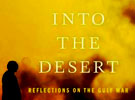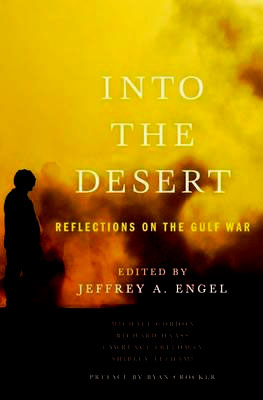Book Review:
‘Into The Desert: Reflections on the Gulf War’
A new book by SMU presidential historian Jeffrey A. Engel takes an insightful look at the 1991 Gulf War.

By PHILIP SEIB
The Dallas Morning News Special Contributor

Jeffrey A. Engel, director of the Center for Presidential History at Southern Methodist University, has performed a valuable service by gathering chapters for Into the Desert from a distinguished group of experts on the war. These authors analyze the war through the magnifier of hindsight and analyze the conflict in the context of subsequent developments in world affairs.
Engel’s own chapter is the book’s best. He sets the record straight on some controversies, including the real role of the much-maligned U.S. ambassador to Iraq, April Glaspie, who was unjustly accused of negligently giving Saddam Hussein a green light to invade Kuwait. She did nothing of the sort, simply relying on the policy guidelines that the White House had approved for her use.
Engel also makes clear that this war was not undertaken for the humanitarian reasons often cited at the time. He writes that “Kuwait’s sovereignty mattered far less to the world than its oil.”
Engel describes the skill with which President George H.W. Bush and his foreign policy team responded to Iraq’s aggression. In the aftermath of the war, President Bush said, “The first test of the new world order has been passed,” and Secretary of State James Baker remarked on how U.S.-Soviet cooperation related to Kuwait signaled the true end of the Cold War. (Engel includes fascinating excerpts from telephone conversations between Bush and Soviet leader Mikhail Gorbachev.)
Another contributor, ambassador Ryan Crocker, writes that the Bush administration’s painstaking work in assembling an Arab coalition to liberate Kuwait was “the most sustained and successful diplomatic effort in modern times.”
New York Times correspondent Michael Gordon delves into the war’s military details. Operating under the principle championed by Gen. Colin Powell and others, the coalition amassed overwhelming force before taking on the Iraqis: 800,000 personnel, of whom 540,000 were Americans.
 Jeffrey A. Engel |
Middle East expert Shibley Telhami describes the political dynamics of the Arab world at the time of the war. He argues that Saddam Hussein had been assuming an increasingly dominant role in the region: “By flaunting his military capabilities, targeting Israel, and highlighting the Palestinian question, Saddam Hussein filled the vacuum of regional despair.” One of the main reasons the United States was able to assemble the anti-Iraq coalition was that Hussein had filled this vacuum too fully, raising concerns among other Arab leaders that he was becoming far too powerful.
Into the Desert is filled with examples of how the past can provide useful guideposts for the present and future. It underscores the value of having a foreign policy based on a combination of a strong military and diligent diplomacy. The book’s authors deserve thanks for illuminating the importance of history.
Philip Seib is a professor and director of the Center on Public Diplomacy at the University of Southern California. His most recent book is Real-Time Diplomacy: Politics and Power in the Social Media Era.